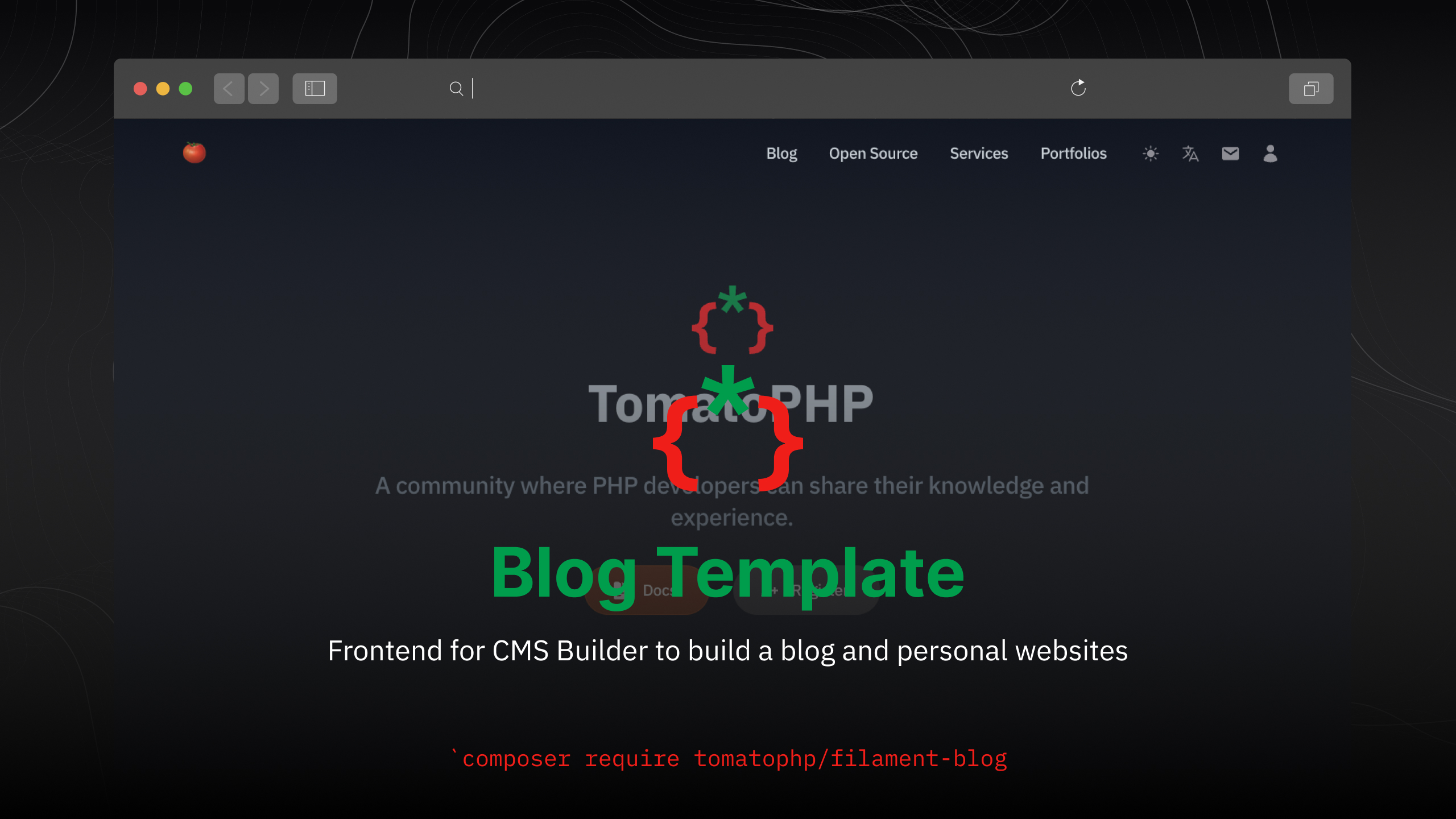
Frontend for CMS Builder to build a blog and personal websites
#Screenshots



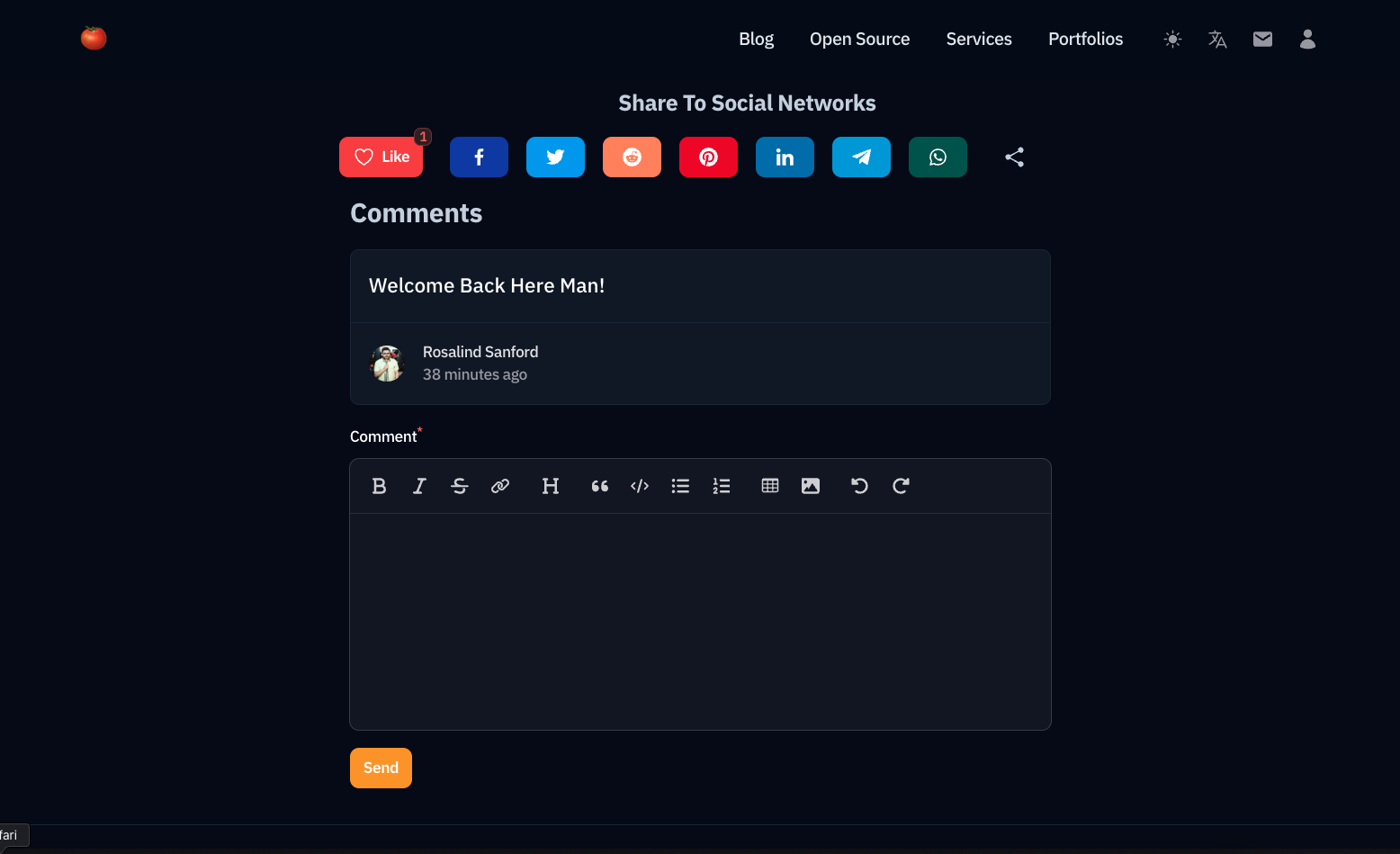

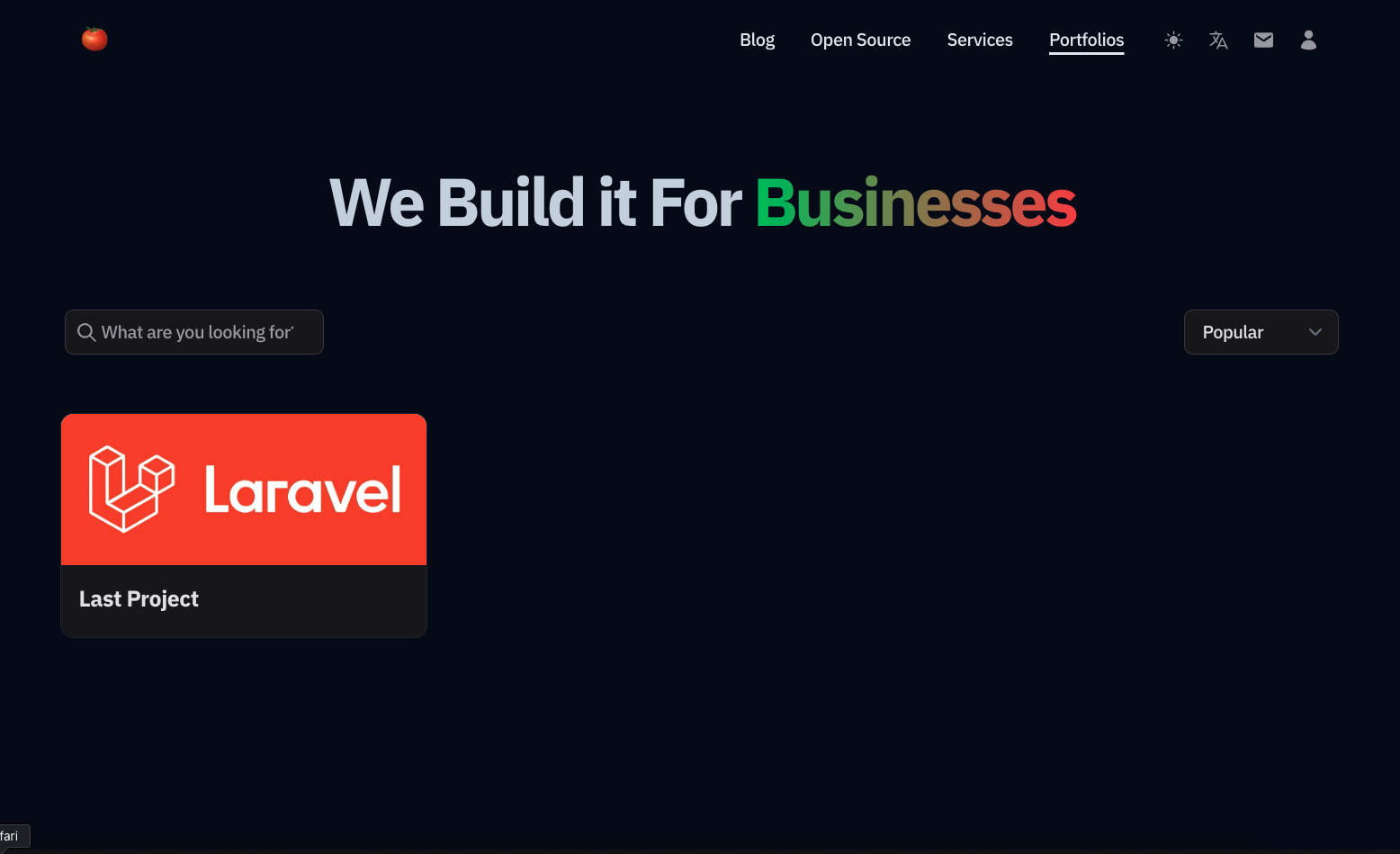


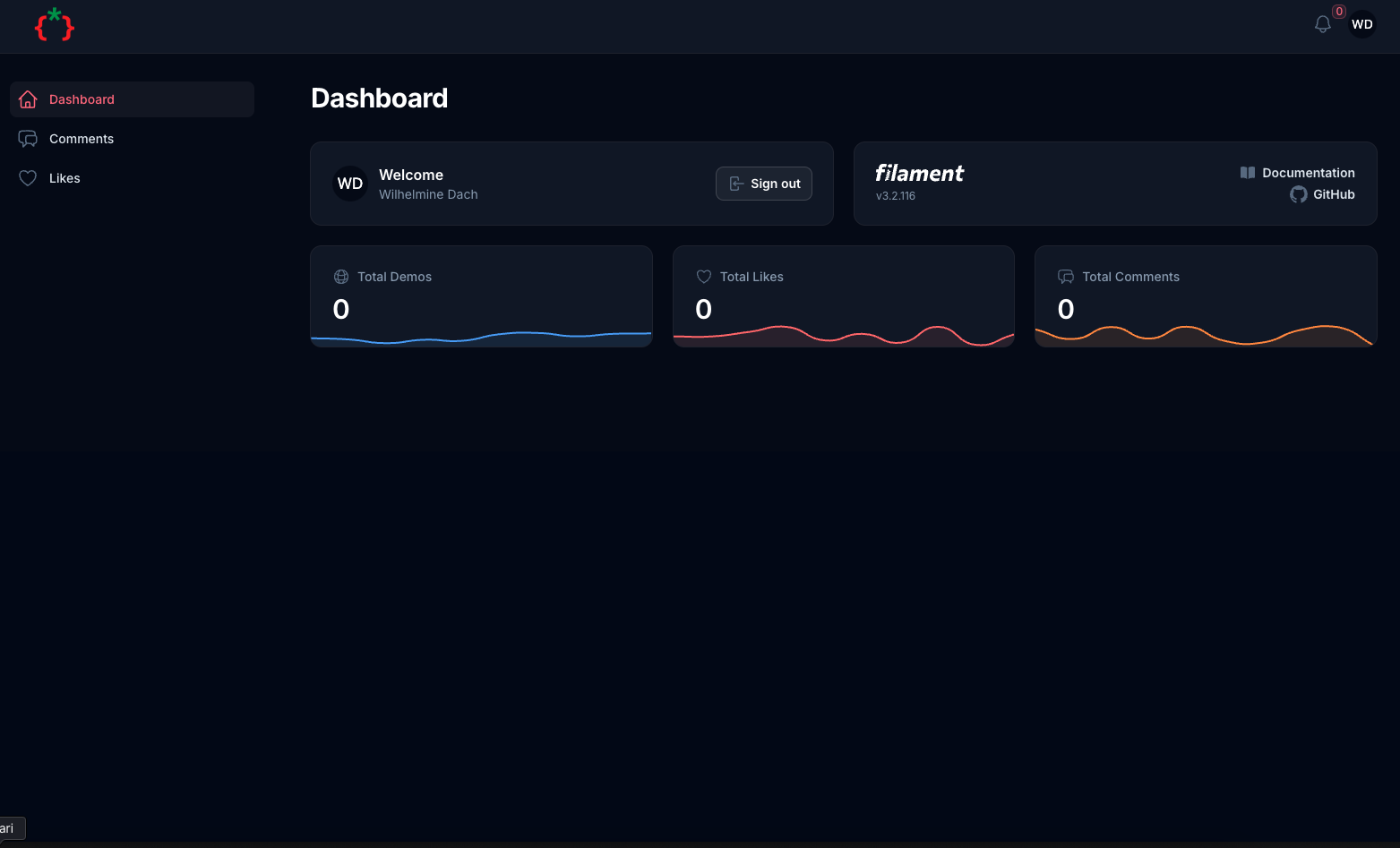

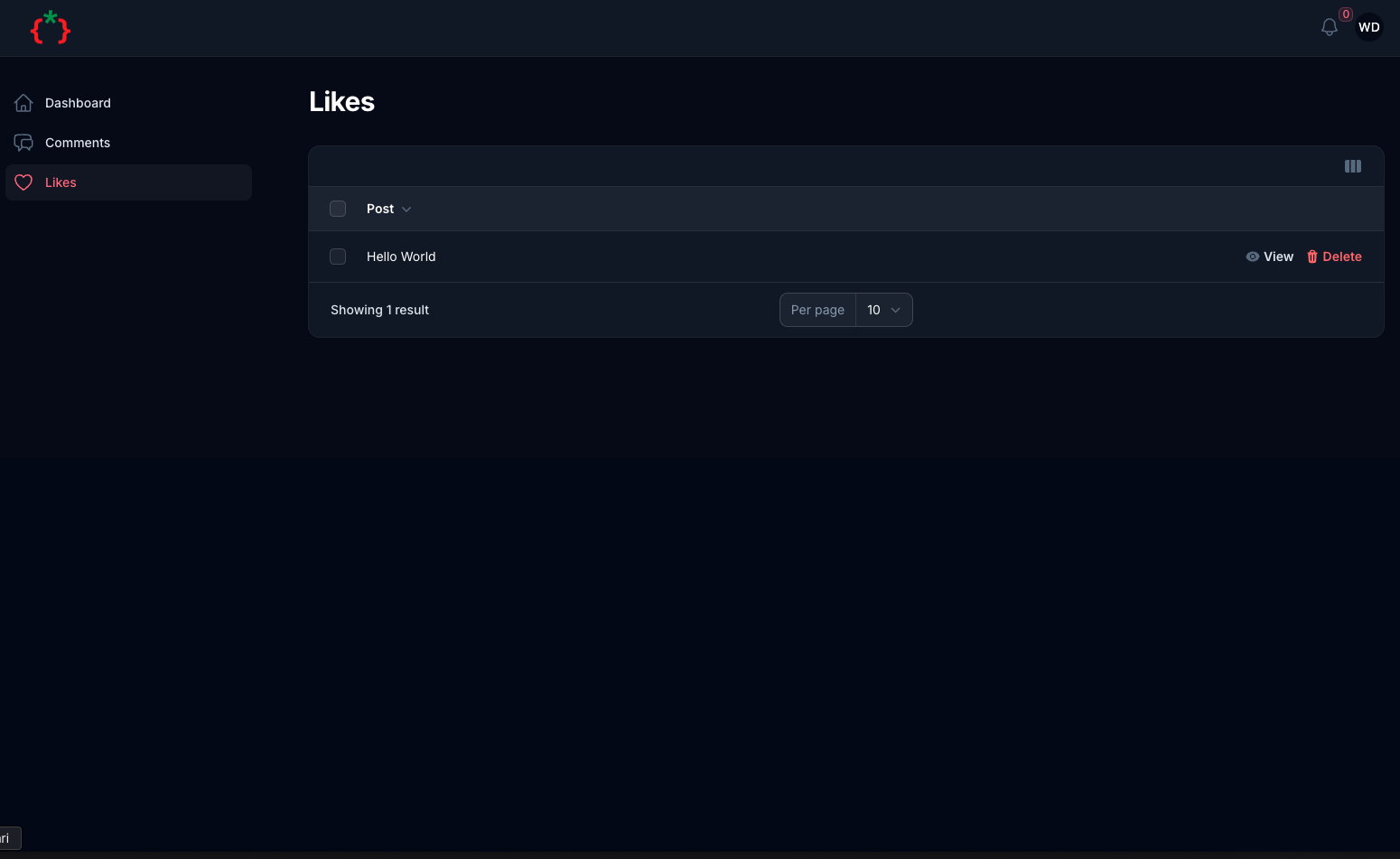
#Features
- [x] Tailwind CSS Blog Template
- [x] Blog
- [x] Open Source integration with GitHub / Composer
- [x] Portfolios integration with Behanace
- [x] Services
- [x] Contact Us
- [x] User Dashboard
- [x] Comments
- [x] Likes
- [x] SEO Friendly
- [x] Multi Language
- [x] Dark/Light Mode
- [ ] Social Login
- [ ] RSS Feed
- [ ] Sitemap
#Installation
composer require tomatophp/filament-blogwe need to publish some migrations for settings and media
php artisan vendor:publish --provider="Spatie\MediaLibrary\MediaLibraryServiceProvider" --tag="medialibrary-migrations"php artisan vendor:publish --provider="Spatie\LaravelSettings\LaravelSettingsServiceProvider" --tag="migrations"if you are using this package as a plugin please register the plugin on /app/Providers/Filament/AdminPanelProvider.php
->plugin(\TomatoPHP\FilamentBlog\FilamentBlogPlugin::make())now you need to create a user panel you can follow instructions on filament-accounts
let's start by create a new panel
php artisan filament:panel appif you need to change the panel name you can change it on config file filament-blog.php
return [ "user-panel" => "app"];inside the new panel add this plugin
->plugin( FilamentBlogUserPanelPlugin::make())and if you don't set the full user panel use it like this
->plugin( FilamentAccountsSaaSPlugin::make() ->editProfile() ->editProfileMenu() ->APITokenManager() ->browserSesstionManager() ->deleteAccount() ->editPassword() ->registration() ->checkAccountStatusInLogin())you need to publish Account Model
php artisan vendor:publish --tag="filament-accounts-model"and on your auth.php add a accounts guard
<?php return [ /* |-------------------------------------------------------------------------- | Authentication Defaults |-------------------------------------------------------------------------- | | This option defines the default authentication "guard" and password | reset "broker" for your application. You may change these values | as required, but they're a perfect start for most applications. | */ 'defaults' => [ 'guard' => env('AUTH_GUARD', 'web'), 'passwords' => env('AUTH_PASSWORD_BROKER', 'users'), ], /* |-------------------------------------------------------------------------- | Authentication Guards |-------------------------------------------------------------------------- | | Next, you may define every authentication guard for your application. | Of course, a great default configuration has been defined for you | which utilizes session storage plus the Eloquent user provider. | | All authentication guards have a user provider, which defines how the | users are actually retrieved out of your database or other storage | system used by the application. Typically, Eloquent is utilized. | | Supported: "session" | */ 'guards' => [ 'web' => [ 'driver' => 'session', 'provider' => 'users', ], 'accounts' => [ 'driver' => 'session', 'provider' => 'accounts', ], ], /* |-------------------------------------------------------------------------- | User Providers |-------------------------------------------------------------------------- | | All authentication guards have a user provider, which defines how the | users are actually retrieved out of your database or other storage | system used by the application. Typically, Eloquent is utilized. | | If you have multiple user tables or models you may configure multiple | providers to represent the model / table. These providers may then | be assigned to any extra authentication guards you have defined. | | Supported: "database", "eloquent" | */ 'providers' => [ 'users' => [ 'driver' => 'eloquent', 'model' => env('AUTH_MODEL', App\Models\User::class), ], 'accounts' => [ 'driver' => 'eloquent', 'model' => \App\Models\Account::class, ], ], /* |-------------------------------------------------------------------------- | Resetting Passwords |-------------------------------------------------------------------------- | | These configuration options specify the behavior of Laravel's password | reset functionality, including the table utilized for token storage | and the user provider that is invoked to actually retrieve users. | | The expiry time is the number of minutes that each reset token will be | considered valid. This security feature keeps tokens short-lived so | they have less time to be guessed. You may change this as needed. | | The throttle setting is the number of seconds a user must wait before | generating more password reset tokens. This prevents the user from | quickly generating a very large amount of password reset tokens. | */ 'passwords' => [ 'users' => [ 'provider' => 'users', 'table' => env('AUTH_PASSWORD_RESET_TOKEN_TABLE', 'password_reset_tokens'), 'expire' => 60, 'throttle' => 60, ], ], /* |-------------------------------------------------------------------------- | Password Confirmation Timeout |-------------------------------------------------------------------------- | | Here you may define the amount of seconds before a password confirmation | window expires and users are asked to re-enter their password via the | confirmation screen. By default, the timeout lasts for three hours. | */ 'password_timeout' => env('AUTH_PASSWORD_TIMEOUT', 10800), ];now it's time to install
php artisan filament-blog:installafter install please run npm
npm i && npm run buildyou need to clean up your web.php routes file and make sure that the / route does not point anywhere.
now you can visit your website and you will see the blog
#Publish Assets
you can publish config file by use this command
php artisan vendor:publish --tag="filament-blog-config"you can publish views file by use this command
php artisan vendor:publish --tag="filament-blog-views"you can publish languages file by use this command
php artisan vendor:publish --tag="filament-blog-lang"you can publish migrations file by use this command
php artisan vendor:publish --tag="filament-blog-migrations"#Other Filament Packages
Checkout our Awesome TomatoPHP